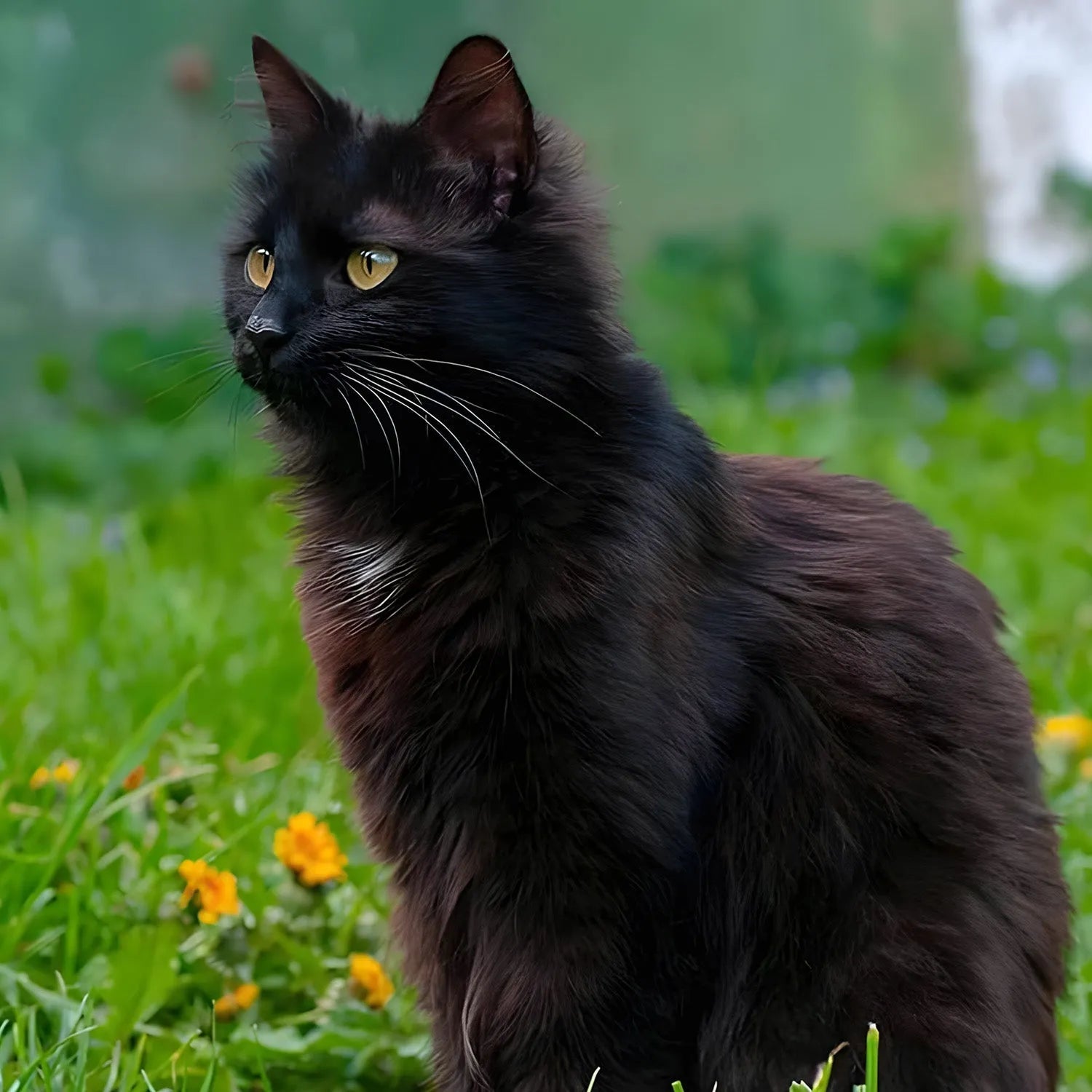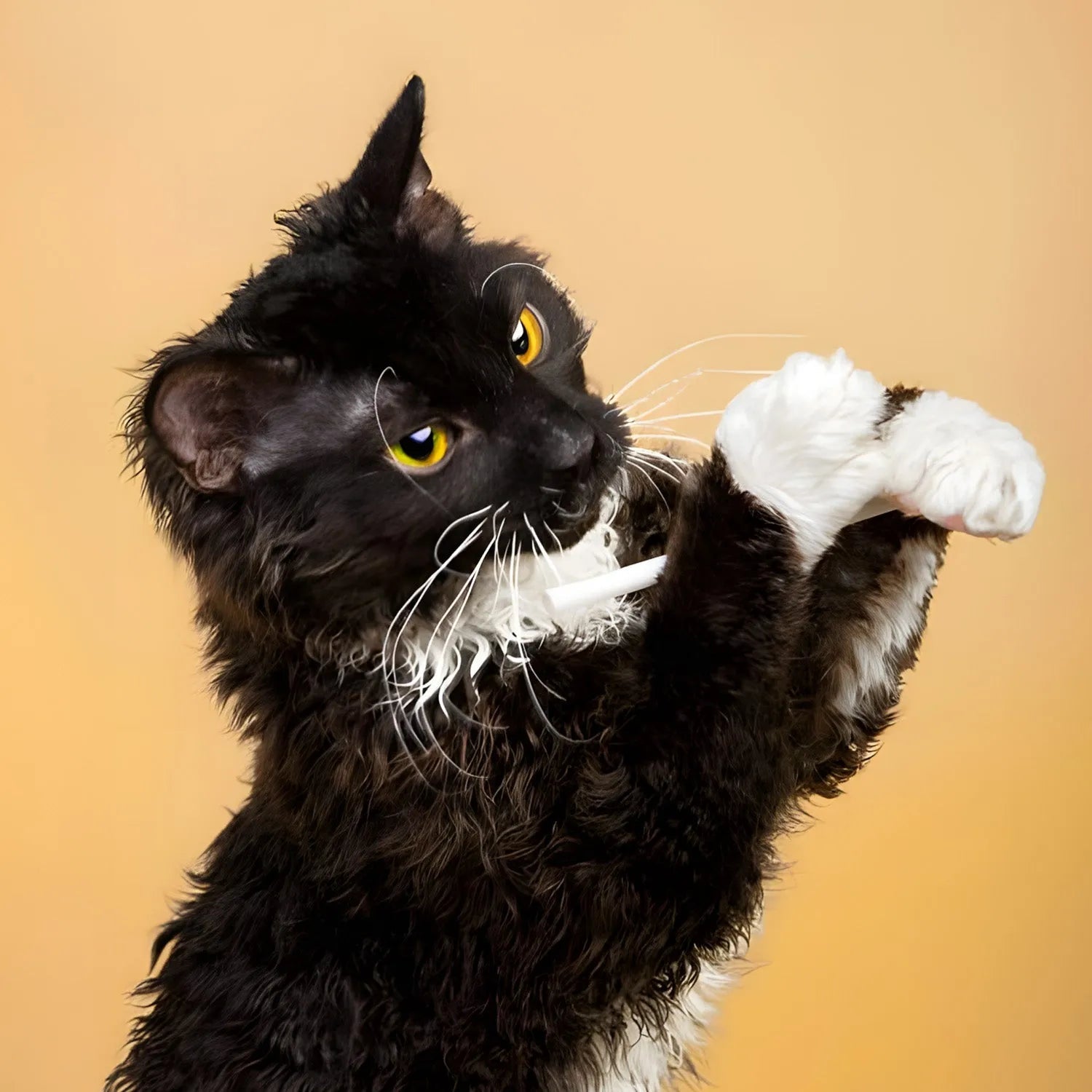Manx: The Tailless Wonder with a Loyal Heart
Introduction
The Manx cat is a breed like no other, instantly recognizable for its lack of a tail—or in some cases, a very short one. Known for their playful, loyal, and intelligent nature, Manx cats have been cherished for centuries, especially on the Isle of Man, where they originated. Despite their lack of a tail, these cats are highly agile, muscular, and excellent jumpers. Manx cats are beloved for their friendly, dog-like behavior and strong bonds with their human families. In this blog, we’ll explore the Manx’s lifestyle, behavior, grooming needs, trainability, and how it interacts with humans and other pets.
Ratings (1-5)
-
Environmental Adaptability: 5
-
Food Consumption: 3
-
Need for Companionship: 4
-
Trainability: 4
-
Tolerance of Children: 5
-
Ease of Domestication: 5
History and Origins
The Manx cat originates from the Isle of Man, located in the Irish Sea, where they have been known for centuries. The most famous feature of the Manx is its lack of a tail, which is the result of a natural genetic mutation. The story of how the Manx cat lost its tail has many legends, with one popular tale saying that it was the last animal to board Noah’s Ark, and the door accidentally chopped off its tail. The reality is that the tailless gene became prevalent on the Isle of Man due to the isolated nature of the population. Over time, Manx cats became known for their unique appearance and robust bodies, making them popular both as pets and as skilled hunters on farms.
Physical Characteristics and Colors
The most notable feature of the Manx cat is its tail—or lack thereof. Manx cats can be completely tailless, which is known as a "rumpy," or have a short, stubby tail, called a "stumpy." Some Manx cats may even have a longer, partial tail, though the completely tailless Manx is the most recognized and desired in breeding circles. The Manx has a round head, large, round eyes, and muscular hind legs that are longer than their front legs, giving them a unique "rabbit-like" hop when they run or jump. Their coat can be either short or long, and they come in a variety of colors and patterns, including tabby, solid, bicolor, and tortoiseshell. Their coats are thick and double-layered, providing insulation in colder climates.
Lifestyle and Behavior
Manx cats are known for their friendly and loyal personalities. They are often described as "dog-like" due to their tendency to follow their owners around the house and their strong bonds with their human families. Manx cats are playful, energetic, and love to be involved in family activities. They are excellent hunters, which makes them natural climbers and jumpers, and they often enjoy games that mimic hunting, such as chasing toys or laser pointers. Despite their energetic nature, Manx cats are also known for being calm and easygoing, making them great companions for individuals or families who want an affectionate but not overly demanding pet.
Trainability and Intelligence
Manx cats are intelligent and can be trained to follow commands, perform tricks, and even walk on a leash. They respond well to positive reinforcement techniques, such as treats and praise, and enjoy interactive toys and puzzles that stimulate their minds. Because of their playful nature, Manx cats enjoy games that involve problem-solving, such as hiding toys or using puzzle feeders. Training sessions with Manx cats should be fun and engaging, as they enjoy spending time with their owners and thrive on mental challenges. Their intelligence and curiosity make them easy to train and a joy to interact with.
Social Behavior and Human Interaction
Manx cats are incredibly social and form strong bonds with their human families. They are affectionate cats that enjoy being involved in every aspect of their owner’s life, often following their humans from room to room and seeking out attention. Manx cats are also known for their gentle and friendly nature, making them excellent companions for individuals or families who want a loving and loyal pet. Despite their strong bonds with their human companions, Manx cats are independent enough to entertain themselves when left alone. They are not overly vocal but will communicate with soft chirps and purrs when they want attention.
Compatibility with Children and Other Pets
Manx cats are excellent companions for children due to their playful and tolerant nature. They enjoy interactive play and are generally patient with children’s antics, provided they are treated with respect. Additionally, Manx cats tend to get along well with other pets, including dogs, as long as they are properly introduced. Their sociable and adaptable nature allows them to integrate well into multi-pet households, and they often enjoy the company of other animals as much as they do humans. Manx cats are known for their ability to form strong bonds not only with their human families but also with other pets in the household.
Grooming and Care
The grooming needs of a Manx depend on whether they have a short or long coat. Shorthaired Manx cats require minimal grooming, with weekly brushing usually sufficient to remove loose hairs and keep their coat looking healthy. Longhaired Manx cats, on the other hand, require more frequent brushing—at least two to three times a week—to prevent tangles and mats. Regular dental care, ear cleaning, and nail trimming are also important to maintain their overall health. Despite their grooming needs, Manx cats enjoy the bonding time that grooming sessions provide, and it can be a great way to strengthen the bond between cat and owner. Bathing is generally not necessary unless the cat gets particularly dirty, as Manx cats are good at keeping themselves clean.
Health and Lifespan
Manx cats are generally healthy, but the gene responsible for their taillessness can sometimes lead to a condition known as Manx Syndrome, which affects the spine and may lead to mobility issues or incontinence. Responsible breeders work to minimize this condition by carefully selecting breeding pairs. Regular veterinary check-ups and a balanced diet are essential to maintain their health. With proper care, Manx cats can live up to 12-16 years or more. Regular monitoring and preventive care are important to ensure a long and healthy life for your Manx cat.
Environmental Adaptability
Manx cats are adaptable and can thrive in various living environments, whether in a small apartment or a larger home. They are particularly well-suited to indoor living, where they can enjoy a stimulating environment with plenty of interactive play. Manx cats are known for their resilience and can adjust well to different climates and household settings. Their adaptable nature makes them well-suited to a wide range of living conditions, but they thrive best in homes where they can receive plenty of attention and interaction from their owners.
Feeding Requirements
A balanced diet is crucial for maintaining the Manx cat's health and energy levels. High-quality cat food that is rich in protein is recommended. Fresh water should always be available. Because Manx cats are active and playful, they may require more calories than less active breeds to support their energy levels. Consult your veterinarian for specific dietary recommendations based on your cat's age, weight, and health needs. Monitoring their diet to prevent obesity is important, as Manx cats can be prone to overeating if not properly managed.
Conclusion
The Manx is a unique and loyal breed that brings energy, affection, and companionship to any household. Their strong bonds with their human companions, combined with their playful and easygoing nature, make them wonderful pets for families and individuals alike. If you're looking for a cat that will form a deep, loving connection with you and provide years of companionship, the Manx might be the perfect fit for you.
For more information about other cat breeds and pet care tips, stay tuned to our blog!
References:
-
Davis, R. (2021). "The Loyal and Playful Manx Cat." *Journal of Feline Studies*, 35(3), 201-215.
-
Richards, A. (2020). "Caring for Your Manx Cat: A Comprehensive Guide." *Cat Lover’s Magazine*, July issue, pp. 30-40.
-
Harris, E. (2019). "Health and Wellness in Manx Cats." *Veterinary Journal*, 79(2), 123-137.


